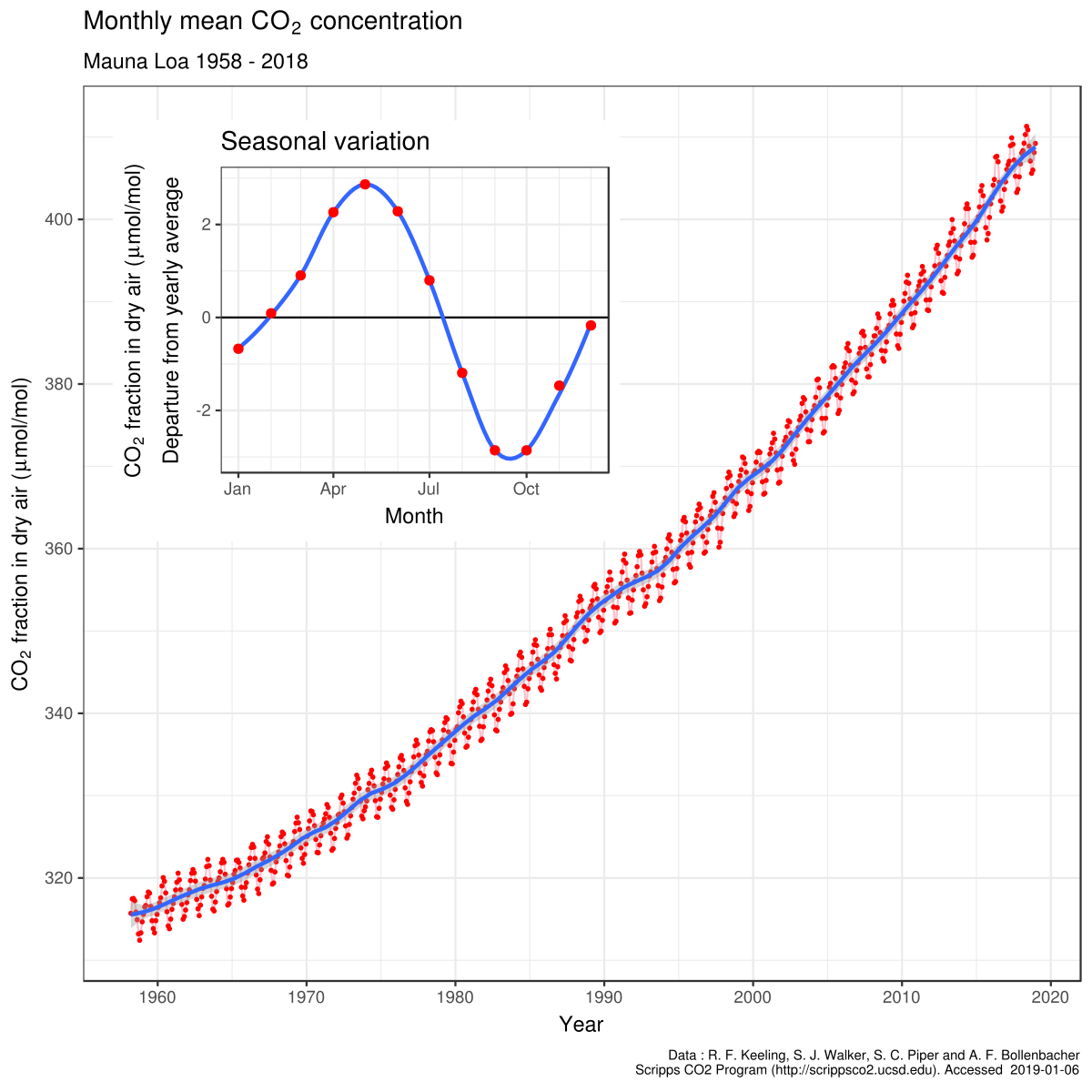Atmospheric CO2 Surpasses 415 ppm for the First Time in 3 Million Years
“We don’t know a planet like this.”
Those were the words resonating across the internet on Monday, May 12, when meteorologist Eric Holthaus responded on Twitter to the breaking news that the atmospheric levels of carbon dioxide went above 415 ppm (parts per million) for the first time in 3 million years. The Mauna Loa Observatory in Hawaii recorded the levels at 415.26 ppm, a small increase that holds dire consequences for the future of the human and natural world alike.
Surpassing this threshold is proof of the countless predictions made by scientific organizations that human activity has caused unnatural and unsustainable increases in the CO2 levels in the atmosphere. Atmospheric data compiled by the Mauna Loa Observatory forms what is known as the Keeling Curve, showing the steep increase in atmospheric CO2 concentrations since 1958. This data projects a continuance of this upward trend into 2020.
The last time carbon dioxide levels were at this level was during the Pliocene geological era that spanned between 3 million and 5 million years ago. According to the scientists behind the Keeling Curve, we can expect future conditions to mirror this period – a time in which the average temperatures at the poles were 18 degrees Fahrenheit warmer and sea levels were 16 to 131 feet higher. One stark difference between conditions in the Pliocene Era and today is the rate at which the atmospheric CO2 concentration is rising, and scientists are still attempting to decipher how this will affect the future.
The Keeling Curve compiles yearly CO2 atmospheric content. Image obtained under a Creative Commons License.
As the levels of CO2 rise, the chemistry of the atmosphere changes as well. According to NASA, carbon dioxide is the greenhouse gas that controls the amount of water vapor in the air, modulating the size of the greenhouse effect. Much of this excess carbon dioxide ends up dissolving into the oceans, changing the chemistry of the water and disturbing the balance of ocean life. On land, carbon dioxide increases global temperatures, increases the likelihood of droughts and drought-induced fires. Furthermore, the warming of average temperatures will cause Northern soils to defrost, releasing huge amounts of excess organic carbon that has been accumulating for thousands of years. These effects are not the only consequences of a rising level of atmospheric CO2, as each small change in an ecosystem causes a global chain reaction in which the ecosystem’s entire integrity could potentially collapse.
It is evident that big ecological changes are due in the next ten to fifteen years, and most scientists agree that we have crossed a threshold beyond which many effects are unavoidable. Passing 415 ppm is just another confirmation that climate change is real, and we are entering a new era in which we really don’t know a planet like this.

